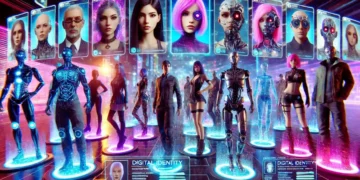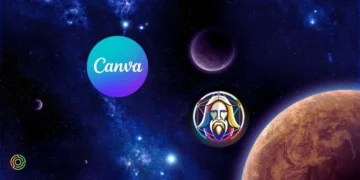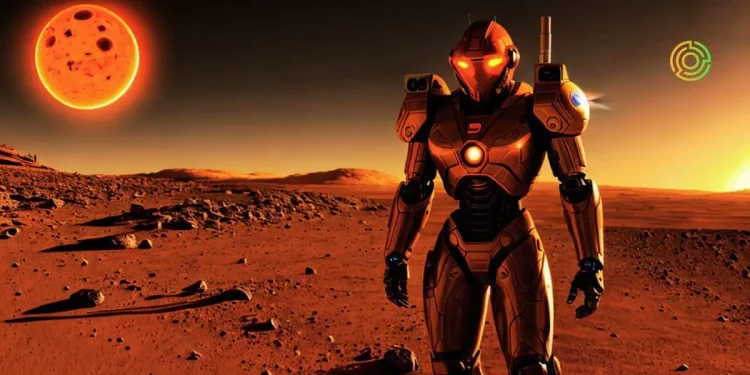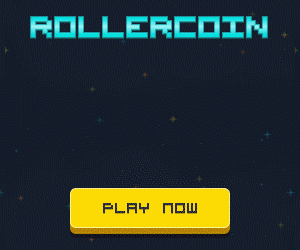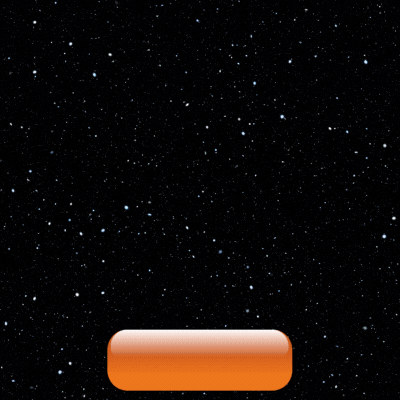In the quest for understanding the mysteries of the universe, one question has perpetually intrigued humanity: Are we alone? The search for extraterrestrial life has always captivated our imagination, and it has now taken an exciting leap forward thanks to the power of artificial intelligence.
In this article, we delve into a groundbreaking AI-based method that boasts a staggering 90% accuracy rate in distinguishing modern and ancient biological samples from abiotic ones.
This innovation has the potential to revolutionize astrobiology and deepen our comprehension of life’s origins, both on Earth and beyond.
The Holy Grail of Astrobiology
Artificial intelligence has bestowed upon us a tool that could unlock the secrets of other planets and potentially rewrite the history of life on Earth. A team of seven researchers, funded by the John Templeton Foundation and led by Jim Cleaves and Robert Hazen from the Carnegie Institution for Science, has achieved a major breakthrough.
Their AI-based method, featured in the ‘Proceedings of the National Academy of Sciences,’ can differentiate between biological samples and those of abiotic origin with remarkable precision.
Opening New Horizons
Dr. Hazen, one of the lead researchers, believes that this method holds the potential to transform the search for extraterrestrial life. It paves the way for deploying intelligent sensors on robotic spacecraft, landers, and rovers, allowing us to hunt for signs of life before returning samples to Earth.
This breakthrough could also shed light on the enigmatic history of ancient rocks on Earth and those collected by the Mars Curiosity rover’s Sample Analysis at Mars (SAM) instrument.
A Multifaceted Approach
Unlike traditional methods that rely on identifying specific molecules, this innovative technique harnesses the power of artificial intelligence to detect subtle differences in molecular patterns. It employs pyrolysis gas chromatography analysis and mass spectrometry to reveal the unique molecular fingerprints of samples.
The AI was trained using data from 134 known carbon-rich samples of both biotic and abiotic origin, achieving an impressive 90% accuracy rate.
Unlocking Ancient Secrets
One of the most astonishing aspects of this method is its ability to discern hints of biology in ancient carbon-rich samples, some of which date back hundreds of millions of years.
This capability challenges conventional wisdom and opens the door to the possibility of finding life forms radically different from what we know on Earth.
A Universal Detector
The implications of this research are profound. Not only can it differentiate between terrestrial and extraterrestrial life, but it can also detect alien biochemicals. This is a crucial aspect because we cannot assume that extraterrestrial life will share the same molecular building blocks as life on Earth.
A World of Possibilities
The potential applications of this technique extend far beyond astrobiology. It could resolve long-standing debates in Earth science, such as the origins of ancient sediments in Western Australia and similarly disputed rocks in other parts of the world.
Moreover, it holds promise for fields like biology, paleontology, and archaeology, potentially enabling us to uncover hidden secrets in ancient remains and fossils.
Conclusion
In the grand quest to unravel the mysteries of the universe, artificial intelligence has emerged as a beacon of hope. Its ability to distinguish between the living and the inanimate, the modern and the ancient, has the potential to revolutionize science as we know it.
As we continue to explore the cosmos, we stand on the brink of discoveries that could reshape our understanding of life, both on Earth and among the stars.
FAQs
How does the AI-based method differentiate between biotic and abiotic samples?
The method relies on subtle differences in molecular patterns revealed by pyrolysis gas chromatography and mass spectrometry analysis. It was trained on a dataset of 134 known samples to achieve its impressive accuracy.
What are the practical applications of this AI-based technique beyond astrobiology?
This technique has the potential to resolve debates in Earth science, such as the origins of ancient sediments, and could find applications in fields like biology, paleontology, and archaeology.
Could this method detect life forms vastly different from Earth’s biology?
Yes, one of the remarkable aspects of this technique is its ability to detect hints of biology in ancient carbon-rich samples, even those dating back hundreds of millions of years, suggesting it could identify life forms quite different from those on Earth.
What makes this AI-based method different from traditional approaches in astrobiology?
Unlike traditional methods that focus on specific molecules, this method uses AI to discern unique molecular fingerprints, allowing it to differentiate between biotic and abiotic samples with higher accuracy.
How might this discovery impact future astrobiology missions?
This breakthrough could enable the use of intelligent sensors on robotic spacecraft, landers, and rovers to search for signs of life before returning samples to Earth, revolutionizing the way we explore other planets.
Follow us on our social networks and keep up to date with everything that happens in the Metaverse!
Twitter Linkedin Facebook Telegram Instagram Google News Amazon Store




